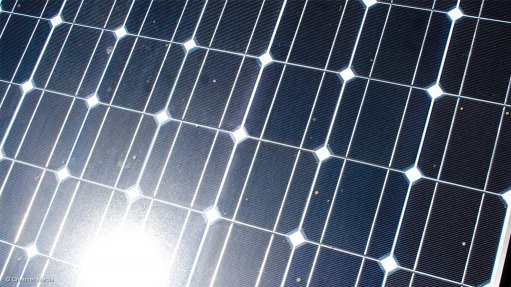
Photo by: Duane Daws
The cost of solar technologies has come down dramatically over the past few years, making this an increasingly viable form of renewable energy for South Africa, attendees at the Solar Indaba were told on Tuesday.
The indaba, being held in Cape Town, has drawn 250 industry executives, government officials, bankers and entrepreneurs from across the South African solar sphere.
“At the beginning of our procurement programme, wind projects were at the forefront of the bidding process. But we soon realised we had to look at it on a broader level,” National Energy Regulator of South Africa Electric Regulatory Reform department head Ronald Chauke said.
He welcomed the huge interest from players in the solar industry.
“Solar photovoltaics (PV) have been driven by a massive price decline. It’s a real game-changer in terms of affordability,” added South African Photovoltaic Industry Association spokesperson Chris Haw.
Solar PV projects comprise multiple PV modules or solar panels, which convert sunlight into usable direct current electricity.
Haw said the price of PV had been slashed ten-fold in the past 20 years, with China, Asia and the Americas dominating the market. PV is seen as relatively stable as it is not subject to fluctuations in oil and other prices.
Figures provided by Greenpeace and the European Photovoltaic Industry Association show that the prices for solar PV systems in Europe fell by about 50% between 2005 and 2010 and are projected to decrease by a further 35% to 50% by 2020.
PV is in its early stages in South Africa. About 30 MW of solar PV had been installed by the end of last year. This is expected to pick up significantly with the Renewable Energy Independent Power Producer Procurement Programme (REIPPPP) that has allocated 8 400 MW towards PV technology for big projects.
Coupled with this, Eskom is hoping concentrated solar power (CSP), which uses mirrors or lenses to concentrate a large area of sunlight, will take off in sun-rich Upington, where the basic design has been completed.
“We have to send a clear signal to the market that CSP will be more affordable in the short term,” said Southern Africa Solar Thermal and Electric Association spokesperson Mikael Hajjar.
He said the advantage of CSP was that it could produce energy when peak production was needed most and it created more jobs and higher local content than other renewable energies.
“Better price and performance achievements are expected in bid window three of the REIPPPP,” said Hajjar.
German Ambassador to South Africa Dr Horst Freitag spoke about his country’s experience in the renewable-energy space. Germany has been at the forefront of renewable energy since the early 1990s. Around 20% of its electricity is generated from renewables.
The country has also made strategic decisions to completely phase out nuclear energy by 2022. Germany has already shut down eight of its nuclear power plants.
“The key to relatively affordable energy supply is diversification of sources, suppliers and energy supply rates,” said Freitag, who added that South Africa and Germany were working together very closely on renewable-energy projects, including the Upington plant and in terms of skills transfer.
Freitag also lauded the job opportunities offered by renewable energy, saying that jobs in the renewables sector were expected to far outstrip employment in the automotive sector in Germany by 2020.